HTIRC E-NEWSLETTER – April 2011
Volume 4 Issue 1
Articles in this issue:
- Tropical Hardwood Tree Improvement and Regeneration Center Launched in Hawaii
- Jennifer Juzwik, Research Plant Pathologist, Joins the Hardwood Tree Improvement and Regeneration Center
- Growing American Chestnut in a Forest: What is the Most Important Source of Competition?
- Exploring our Forests’ Histories to Build a Better Future
- Engineering Drought-Tolerant Hardwoods to Combat Climate Change
- Project Aims to Aid Regeneration of Important Trees in Tanzania
Welcome to this issue of the Hardwood Tree Improvement and Regeneration Center E-newsletter. The HTIRC is committed to enhancing the productivity and quality of Central Hardwood Region trees and forests for the economic and environmental benefits they provide. Scientists at the HTIRC are using conventional tree improvement breeding as well as molecular and genetic technologies to improve the wood quality, growth characteristics, and insect and disease resistance of trees like black walnut, black cherry, red and white oaks, butternut and American chestnut.
Research in tissue culture, tree nursery practices, tree plantation establishment and management, and Central Hardwoods silvicultural systems is aimed at increasing the regeneration success rate for high quality hardwood trees and forests. Some interesting and unusual research areas include examining the potential for propagating trees with “figured” wood: birds-eye maple or curly walnut; and breeding trees that will be an economical source of bio-fuels.
Twice per year, we will attempt to provide interesting and useful information on Central Hardwood trees and forests, as well as sources for additional information and assistance.
Please pass this newsletter along to others who may enjoy or benefit from the information provided. If you would like a closer look at the HTIRC, please visit our web site at: http://www.htirc.org
Tropical Hardwood Tree Improvement and Regeneration Center Launched in Hawaii
The islands of Hawaii harbor a multitude of unique plant species, many of which are threatened by invasions of non-native plants, animals and diseases, climate change, and changes in land use and management. In a strategic approach to confront these threats, the Hardwood Tree Improvement and Regeneration Center is partnering with state and private entities in Hawaii, and the USDA Forest Service and Natural Resources Conservation Service, and the US DoI National Park Service to develop research and management programs. One of the first targets for research will be the Koa tree (Acacia koa), a culturally, environmentally, and economically important tropical hardwood tree native to Hawaii. Koa, like many Hawaiian hardwoods, has been removed from or depleted in much of its former range, and suffers from problems with insects, disease and poor regeneration. The new Tropical Hardwood Tree Improvement and Regeneration Center will use the combined expertise of the partner organizations to explore several issues related to conservation of Koa:
- Explore the genetics of Koa and work to provide improved selections for plantings for a variety of objectives
- Refine nursery practices to make more high quality Koa planting stock available
- Provide improved planting stock for plantings on diverse sites and at different elevations
- Address disease and insect issues limiting Koa regeneration in some areas
- Develop a better understanding of Koa regeneration and silviculture (tree culture) to provide opportunities for Koa to be used in the reclamation of degraded crop and pasture land.
- Facilitate the development of partnerships or cooperatives dedicated to Koa as an important part of Hawaiian culture, environment, and economy.
Koa offers many opportunities, due to its potential for rapid growth, ability to fix nitrogen, and the beauty and value of Koa wood. For two decades, afforestation of limited areas of high elevation pasture lands with Koa has shown that these plantings can achieve multiple objectives: high value timber production, enhanced watershed function, soil rehabilitation, site restoration, increased ecological benefits for wildlife, mitigation of the effects of invasive species, and increasing carbon sequestration. Many other Hawaiian and tropical hardwoods could benefit from this same model for restoration and management, and efforts to identify and develop improved tree selections for a variety of objectives. By creating management and improvement options for native flora across Hawaii and the Pacific, this effort will help to maintain the deep cultural linkages between native peoples and the forest.
If you would like to learn more about the Tropical Hardwood Tree Improvement and Regeneration Center and the many partners making this effort possible, please follow this link: Tropical Hardwood Tree Improvement and Regeneration Center
 .
.
Koa wood is both economically and culturally important for Hawaii
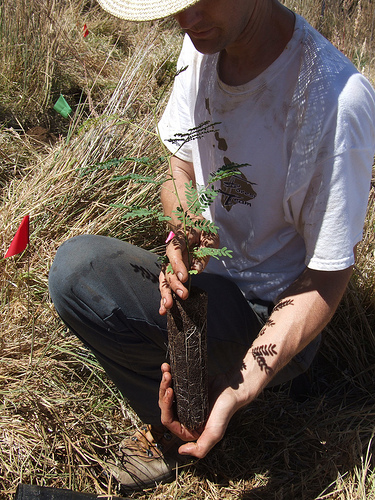
The sustainability of Koa can be enhanced by using high quality planting stock and reliable regeneration methods
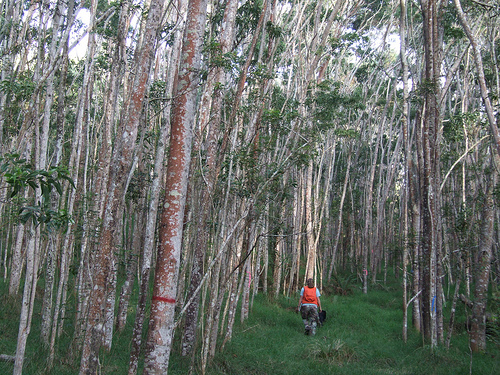
Reforestation of degraded crop and pasture lands with Koa can provide
many benefits to the citizens and landscape of Hawaii
Jennifer Juzwik, Research Plant Pathologist, Joins the Hardwood Tree Improvement and Regeneration Center
Jennifer Juzwik, Ph.D., a research plant pathologist with the USDA Forest Service Northern Research Station in St. Paul, MN, will be joining the Hardwood Tree Improvement and Regeneration Center at Purdue University. Dr. Juzwik will contribute her considerable expertise in forest pathology to help the HTIRC address disease issues threatening fine hardwood tree species. Effective management of fine hardwood trees requires an understanding of the native and introduced diseases each species of tree may face. This is particularly important as native trees face exotic disease organisms accidentally introduced through movement of wood or plant materials across state and national borders.
Dr. Juzwik has been working in plant pathology since receiving her B.S. in Biology from Fairmont State College in 1976. She holds a M.S. in Plant Pathology from Colorado State University, and a Ph.D. in Plant Pathology from the University of Minnesota. Dr. Juzwik has worked in both Canada and the United States, and has been working with the USDA Forest Service Northern Research Station since 1989. Her current research work involves developing new or refined tools for managing oak wilt in the Upper Midwest, investigate the decline, mortality, or other loss of hickory in North Central and Northeastern states, detection and monitoring of invasive pathogens in the Upper Midwest, and thousand cankers disease of black walnut.
The Hardwood Tree Improvement and Regeneration Center is a part of the network of research locations that make up the USDA Forest Service Northern Research Station. The personnel and partners of HTIRC look forward to welcoming Dr. Jennifer Juzwik to her new research location in West Lafayette, Indiana in the near future.
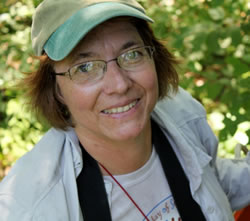
Growing American Chestnut in a Forest: What is the Most Important Source of Competition?
By Brian Bailey and Mike Saunders
Open field plantings are a way to uniformly test the performance of American chestnut seedlings, determine their level of resistance to disease, and evaluate growth, all where external site variability is minimal. Field plantings also allow us to evaluate the growth and competitive ability of chestnut in free to grow environments. But to some degree, they ignore the conditions trees face when battling for space between other trees, big and small, within an intact forest.
A tree’s performance under a forest canopy will depend on its ability to germinate and grow in shade, absorb nutrients and compete successfully with understory plants. These abilities are not well known for American chestnut. My research has begun to understand the range of growing conditions chestnut can establish within, and identified what silvicultural assistance chestnut might benefit from. Knowing light and environmental requirements prior to outplanting will help foresters know what type of management is needed to ensure successful establishment. Treatments that can facilitate American chestnut growth will allow for a quicker and more efficient restoration of the species.
In spring 2009, chestnut, northern red oak, sugar maple and red maple were planted within an intact forest (control), a stand with the shade-tolerant midstory removed, and in open field plots (field). Midstory removal is a common technique that increases light and growing space to encourage the establishment of intermediately shade tolerant species by removing all sapling sized trees (d.b.h. < 6”), while leaving the uppermost canopy intact. Plantings were tested at two sites. One site was dominated by white oak and sugar maple with a basal area of 159 ft2 acre-1, which was reduced to 137 ft2 acre-1 after the midstory removal. The other, wetter site tested averaged 1.5 times more soil moisture throughout the season. Here, hickory and elm were most prevalent, and basal area was reduced from 113 to 94 ft2 acre-1 in the midstory removal treatment. At both sites, conditions under the intact forest controls were quite dark, with an average of 93% canopy closure, while the post-midstory removal conditions were more open, with canopy closures of 86% and 83% at the drier and wetter sites, respectively.
While silviculture often focuses on manipulating aboveground conditions, it is well documented that belowground root competition can also have a pronounced effect on seedling performance. Shoots compete primarily for light, while roots compete for water and many essential mineral nutrients. Trenching to a depth of 18 inches was used in this study to sever overstory roots from the soil where seedlings grew, and weeding was used to control herbaceous vegetation growth near the seedlings. This combination of treatments allowed us to separate the influence of root and light competition from overstory trees and the herbaceous competition on seedling growth and survival.
Survival was largely dependent on site. At the drier site, none of the 16 chestnuts survived through year two in the control treatment, although survival was higher in the midstory removal treatment (80%) than the field (67%). Sugar maple was also most successful in the midstory removal treatment, whereas northern red oak clearly preferred the field planting. At our wetter site survival within the control was also poorest, albeit at 69% for chestnut. Midstory removal came in the middle, at 74%, and the field was highest at 90%. The other species showed similar patterns and frequencies. Canopy openness values were nearly identical between control treatments, at 7%, failing to provide an explanation for the large difference in survival.
After two growing seasons, there was a general trend of decreased growth as light decreased – from field, to midstory removal, to control plots, respectively. However, at the drier site treatment differences between midstory removal and control plots were too similar to clearly discern any difference. At the wetter site however, midstory removal clearly increased growth in relation to the control. Morphologically, chestnut responded positively to reduced root competition, while no other species showed a discernable trend. The two maple species responded positively to the weeding treatment.
Leaf gas exchange (i.e. net photosynthesis, transpiration) was measured during the second growing season on a sample of American chestnut and northern red oak seedlings within the midstory removal treatments. Pre-dawn leaf water potential, used to measure the water stress a plant is experiencing, was taken on a subset of leaves. Results show that trenching decreased water stress and increased net photosynthesis at our wetter site, for both chestnut and red oak. At the drier site, neither trenching nor weeding had a discernable effect. However, comparisons between species at the drier site showed that chestnut had lower transpiration rates, possibly hinting at water usage differences among the species. We will continue to explore these relationships.

The trencher used to sever belowground roots sits within the midstory removal
treatment at our drier site, prior to planting in the spring of 2009.
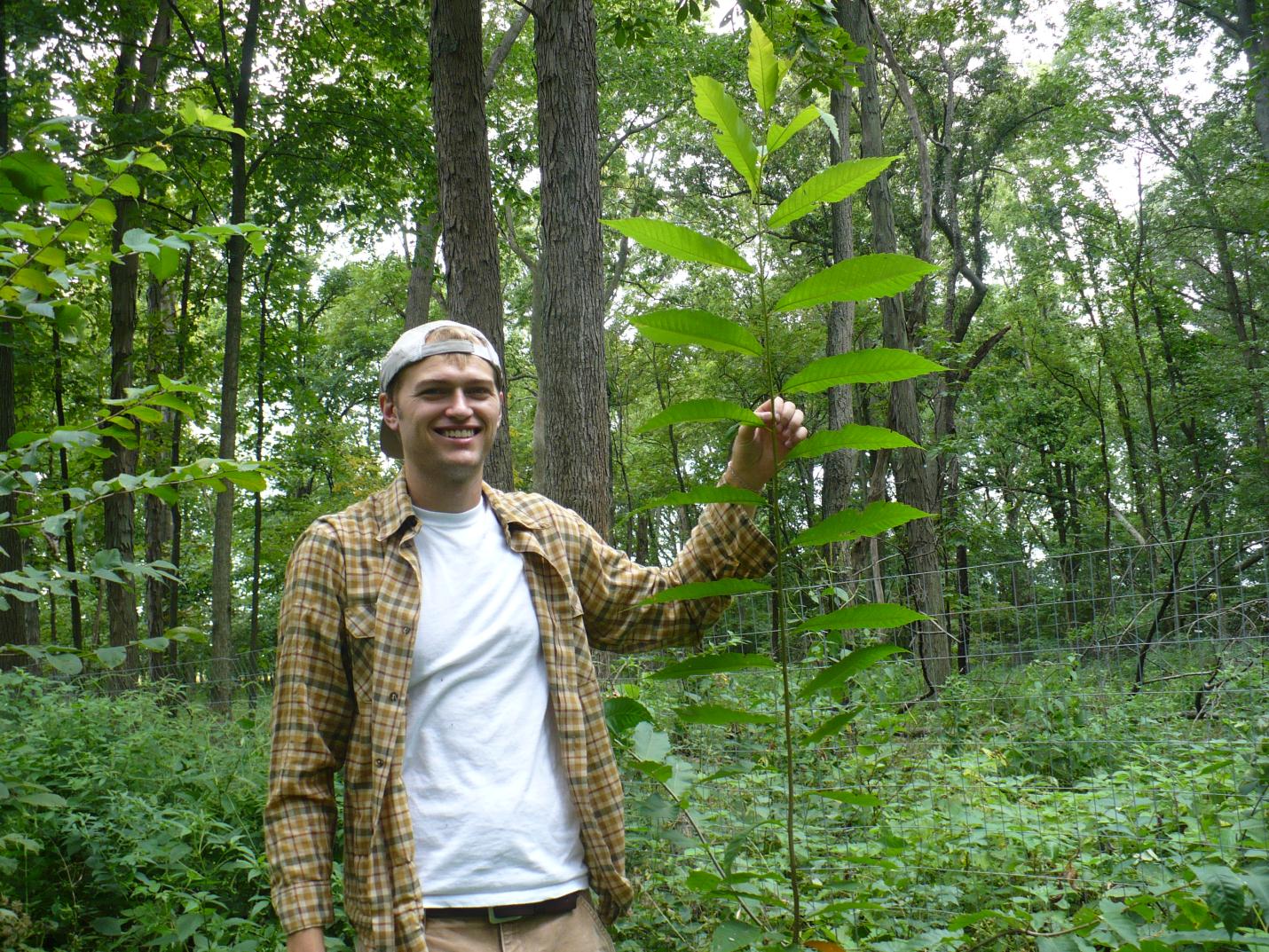
The author, at 6′ 4″, stands beside an American chestnut two years after
outplanting within the midstory removal treatment.
Exploring our Forests’ Histories to Build a Better Future
By Rob Morrissey, Dr. Michael Saunders, and Dr. Michael Jenkins
In the past, timber was the main objective of forest management planning. Today, however, preservation of ecosystem diversity, resilience, function, dynamics, and services are common objectives alongside timber removals. An emerging paradigm of forest management is centered upon emulating natural disturbances. Practices that emulate historical disturbance regimes may produce forest composition and structure that better protects the biodiversity we aim to preserve in our forests today.
Forest management has traditionally considered silvicultural manipulations and responses at the stand level; stands are typically arbitrary forested areas of similar species composition, site, age structure, or even ownership boundaries. This scale of inquiry disregards the fine-scale variation within a stand. In deciduous temperate forests, disturbance regimes are dominated by small scattered disturbances, such as wind, insects or ice, that affect a single tree or small groups of trees to create canopy gaps (Fig. 1). Openings in the canopy result in increased levels of light, water, and nutrients for trees that colonize the openings; succession within these areas are referred to as gap dynamics. These processes have a significant influence on stand structure and composition.
Trees, the primary producers in forests, are the most influential source of structural variety by means of their growth habits and patterns. Understanding forest dynamics over time is essential to understanding long-term responses to forest management. Purdue University’s Herbert Davis Forestry Farm (Fig. 2) offers a rare opportunity to examine long-term dynamics of a mesic hardwood forest of the Central Hardwood region. Shortly after acquiring the properties in the 1920s, Purdue professor Dr. B.N. Prentice inventoried and mapped the location of every tree in these stands. The Davis Research Forest, a registered national landmark, is an old-growth forest that has never been harvested. Two similar tracts on the property have been partially harvested in the 1950s using a single-tree selection approach, thus creating canopy gaps throughout the stands. These stands will provide a great comparison between the dynamics of natural and managed stands after 50+ years.
Our research will focus on the development of gaps over time and how they translate to the stand level over the last 100+ years. By comparing naturally-created gaps and man-made gaps, we hope to understand how gaps differ in terms of size, shape, and distribution throughout stands over time, and how trees compete for growing space (resources) as they recolonize gaps. We will explore some of these questions using dendrochronology (the dating and study of tree-rings). By examining patterns of tree-rings over time (Fig. 3), we can evaluate the timing of canopy gap creation events in the past and their location within stands.
We also hope to explore the structure of the different stands as well. Structural heterogeneity, defined as the physical distribution of both live and dead tree biomass material in a stand, is generated and sustained by disturbance and the re-population of disturbed sites. The two processes are intricately linked because disturbance characteristics may influence development of species composition patterns, which may in turn influence future disturbance patterns in the future. Characteristics such as coarse woody debris, snags, tree heights, patches in different stages of development, and tree size distributions influence wildlife habitat, tree regeneration, biodiversity, and sustainability of our forests.
With increased development and forest fragmentation, possible climate shifts, concerns over biodiversity loss, ecosystem services, and sustainability, it is clear that foresters must improve their understanding of forest succession and dynamics to ensure future production of timber, wildlife, water, biodiversity and a multitude of other resources. We hope that this research can help us better understand forest dynamics and improve forest management practices through understanding the history of our Midwestern forests.
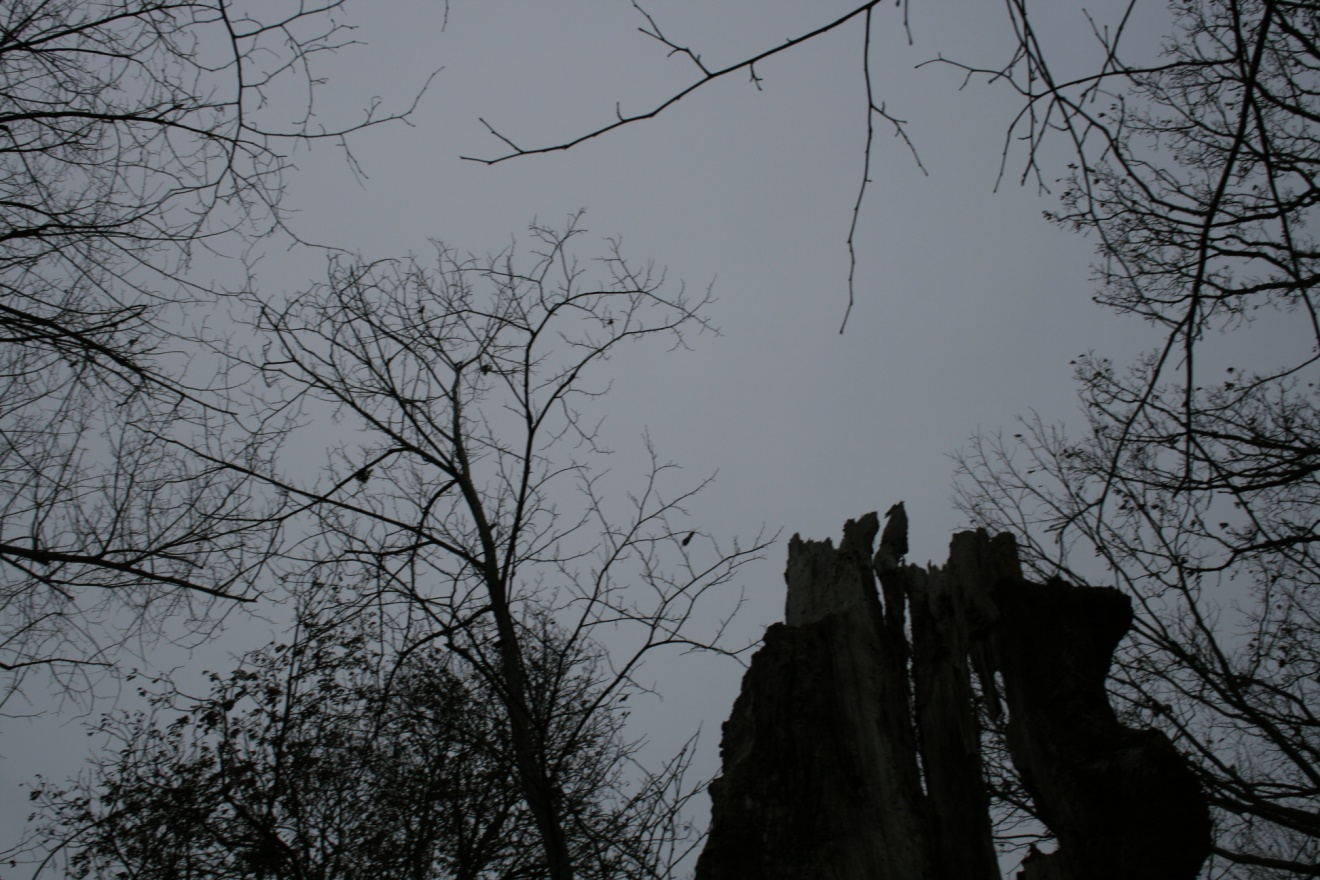
Fig. 1. Snag left after the destruction of a large canopy tree created
a gap in the canopy; another tree is emerging to take its place one day.
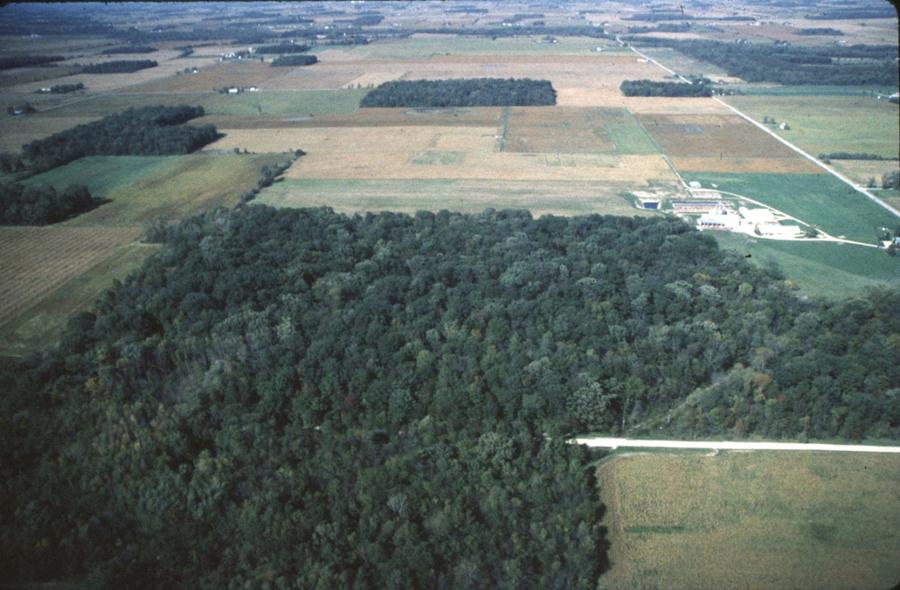
Fig. 2. Overview of Purdue University’s Herbert Davis Forestry Farm
.
The old-growth stand is in the foreground.

Fig. 3. Northern red oak tree cores. The arrows on cores A and B indicate (from left to right) the opening of a canopy gap and subsequent competition from other trees, as evidenced by the decreased size of the annual rings. Tree A experienced a period of increased growth for approximately 19 years, while tree B displays 10 years of increased growth; this may indicate that the gap where tree B grew was smaller than the gap near tree A.
Engineering Drought-Tolerant Hardwoods to Combat Climate Change
Green ash (Fraxinus pennsylvanica) is a fine hardwood tree native to North America. Ash trees prefer to grow in ranges that possess an adequate amount of fertile soils. Wood from ash species has been used in the production of baseball bats, snowshoes, flooring, furniture, and tool handles. Historically, the use of ash wood to make food containers has also been documented, because it does not impart a “woody” taste to the food.
In the United States, the range of green ash covers the majority of the eastern seaboard, and extends westward towards Montana and downward through Oklahoma and Texas. Climate change variability over the last few decades has played an important role in growth and regeneration of many tree and plant species. The incidence of drought has been a primary factor in the delay of recovery of most forest tree species.
Precipitation, runoff, and soil moisture measurements have been made in many different areas of the country, and published online for public use. By collecting and collating precipitation data, Shaneka Lawson, PhD Candidate, was able to determine the change in total annual precipitation throughout the green ash native range. By observing changes in precipitation levels in many key areas of green ash growth, she has been able to hypothesize that fluctuations in precipitation events throughout the latter part of the century may have hindered green ash growth, and perhaps supported the growth of other more drought-tolerant tree species.
Using data obtained from Long Term Ecological Research (LTER) stations within the green ash range, an accurate account of these data were obtained and analyzed for trends (Fig. 1). As precipitation was not the only trait involved in water stress, information obtained from its examination can only provide a visual interpretation of one of the major contributing factors to unfavorable tree growth conditions. The results indicated subtle shifts in precipitation events throughout the nation, as regions accustomed to fewer millimeters of precipitation were subjected to increased amounts, while those regions accustomed to higher levels of precipitation were exposed to decreased levels. Other qualities such as the speed with which water was taken up by the roots and exits the plant through stomata (openings in leaves and stems that allow for water loss), and the total amount of water loss have also been measured in the last few years to determine the involvement with respect to understanding and reporting the drought response.
In response to drought conditions, ash trees exhibited severe branch dieback whether during the summer months or during winter when soil water was plentiful, but remains trapped in frozen pools and was unavailable for use by the tree. Possessing shallow roots and a heightened sensitivity to soil moisture stress, decline in ash growth was often an indicator of increased air pollutants, such as ozone (O3) and chlorinated hydrocarbons (CHCs) or poor soil nutrient supplies. Over the last century severe dieback in northeastern ash communities and the insurgence of the emerald ash borer across the Midwest (www.emeraldashborer.info/files/MultiState_EABpos.pdf) have hindered population growth.
A thorough examination of the research literature available on drought-tolerance has emphasized the scarcity of data available using ash species as a research model. Use of ash species in scientific studies has been slow to develop as there was no consensus about how to insert foreign DNA into ash. With the publication of a new protocol for DNA insertion (genetic transformation) into ash developed here at Purdue University (Du and Pijut 2009), ash species can now be used for research studies attempting to improve hardwood quality. This advancement in our knowledge of green ash transformation technology has provided the basis for the creation of transgenic ash trees that can carry DNA obtained from other model plant species (Fig. 2).
One of the projects involving drought-tolerance and green ash currently being explored by Shaneka in the Pijut lab at Purdue University involves the use of a stomatal density gene from Arabidopsis, a model plant species. Stomata refer to the pores in leaves that allow for the influx of carbon dioxide and the release of water. This gene is first being used in poplar, a model tree species, and then in green ash to alter both the number and proximity of stomata to prevent excess water loss. Thus far, results in Arabidopsis and poplar have indicated that our candidate gene does influence stomatal development in the same manner as expected (Fig. 3).
These experiments, to our knowledge, represent the first attempts to use a gene obtained from Arabidopsis in both poplar and green ash. In order to improve visualization of the changes in stomatal density, a specialized staining technique was developed and has improved our ability to assess stomatal numbers (Fig. 4). Thus far, the observed changes in stomatal density have correlated to improved drought-tolerance and water-use efficiency (amount of water used by the tree in relation to biomass produced) of Arabidopsis and poplar. Our transgenic green ash trees are not yet large enough to be tested, however preliminary results indicate that the trend in drought-tolerance and water-use efficiency will be repeated. Naturally a drought-tolerant tree, further improving drought-tolerance capabilities in green ash would serve to improve the aggressiveness of this tree in reforestation and afforestation efforts.
With the predicted improvements in drought-tolerance expected to be seen in green ash, the possibility remains that the drought-tolerance capabilities of other ash species (white, black, blue, and pumpkin) may also be enhanced. The findings of this research are not limited to poplar and green ash species. The gene used in this project may have the potential to be used to isolate similar genes in other tree species, thus providing a means of drought-tolerance enhancement for a number of tree species expected to perform poorly in response to a changing climate.
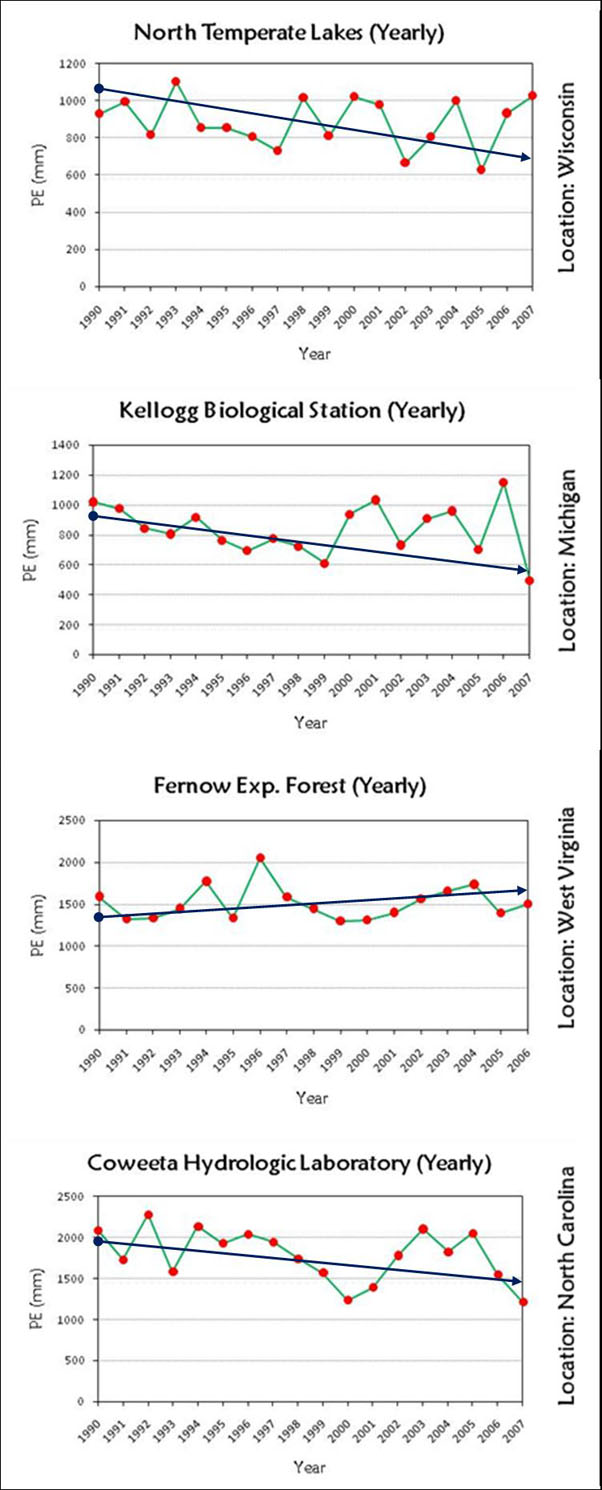
Fig. 1. Long-Term Ecological Research precipitation (PE) data. These four sites were chosen based on location and the availability of large data sets. Note the slight downward trends in all states except West Virginia, where a slight increase in precipitation has been recorded.
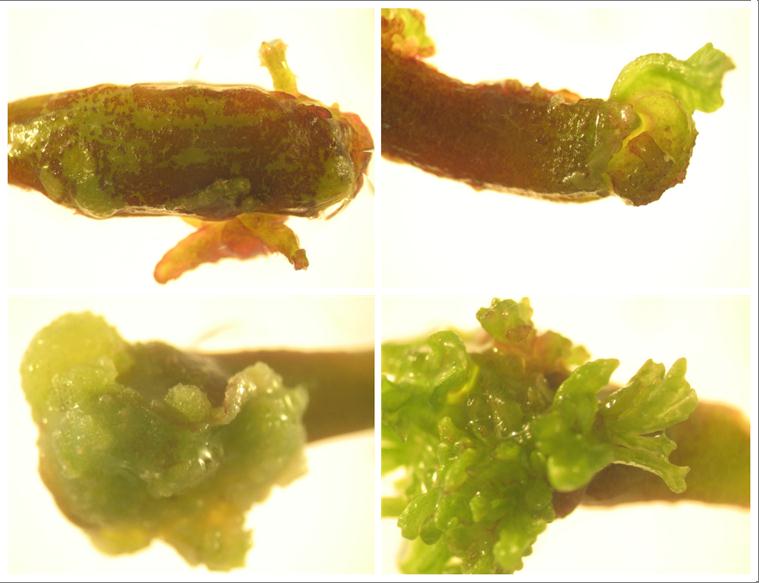
Fig. 2. Green ash stems (hypocotyls) after genetic transformation. Regeneration of shoots on hypocotyls cultured on medium supplemented with antibiotics indicates that the desirable gene has been successfully introduced into the plant material.

Fig. 3. Tissue culture vessels containing transgenic lines of poplar and ash. The poplar lines have been tested for drought-tolerance and water-use efficiency, while the green ash transgenics are not yet large enough to be tested.
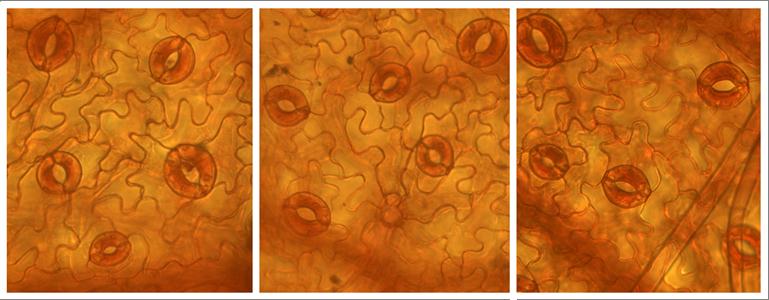
Fig. 4. Examples of stomatal staining. The three panels above all represent the degree of visualization that has been achieved with the new staining technique. Although all panels indicate five stomata, the overall stomatal densities of these three leaves were significantly different.
Project Aims to Aid Regeneration of Important Trees in Tanzania
By Mary Schott
The felling of trees for charcoal and timber production, as well as clearing land for agriculture, has caused widespread deforestation in the Kigoma region of western Tanzania – an area inhabited by the poorest of the poor. Deforestation has led to serious detrimental impacts, most notably the lack of wood for construction and fuel, loss of modest incomes through the selling of sticks for firewood, and perhaps most devastating, lack of fuelwood for cooking and purifying unpotable water. Additionally, deforestation contributes to erosion, sedimentation, loss of biodiversity, depletion of nutrients in the soil, loss of forest related food, and loss of much needed medicinal plants.
Trees for Tanzania ( http://www.treesfortanzania.com/ ), a project founded by Mary Schott, a MS student in the Pijut lab, is committed to help ease the burden caused by deforestation in Kigoma, Tanzania. She and her team are doing this through a combination of education and hands-on agroforestry training and distribution of free tree seedlings in and around Kigoma. She is also conducting research in Tanzania and at Purdue University. Trees for Tanzania has established research plots in Kigoma to evaluate several tree species for value as fast-growing fuelwood and timber sources. Her research at Purdue is focused on rapid propagation of two threatened hardwood tree species that are indigenous to Tanzania.
Pterocarpus angolensis (bloodwood) and Afzelia quanzensis (pod mahogany), tree species of the miombo region of sub-Saharan Africa, are highly prized for both timber and fuelwood and medicinal properties. Because of this great value to the indigenous peoples of the United Republic of Tanzania, these trees are being harvested at an unsustainable rate. Considering the low number of seedlings of both species that recruit into adults in forests, efforts have been devoted without much success to propagating trees in nurseries. Commercial attempts to grow seedlings have been largely unsuccessful. Compared to other tree species such as pine and Eucalyptus, very little research has been devoted to bloodwood and pod mahogany. Survival of these important tree species can only be assured if a reliable system for producing large numbers of healthy tree seedlings is developed, which will enable these species to be recruited back into the miombo woodlands of Tanzania.
The specific objective of Schott’s research is to develop propagation protocols for bloodwood and pod mahogany, which will allow rapid production of planting stock for use in agroforestry and reforestation programs in western Tanzania. While the technologies used to do this are not new, joining of the technologies to form a complete system of production will provide a new and systematic approach to increasing the number of seedlings available to plant, and will improve the chances of survival.
Bloodwood and pod mahogany are traditionally propagated from seed collected in the wild. Conventional propagation methods such as grafting and rooting of cuttings from mature trees have been used, however such methods present many problems. These methods are generally slow to produce results, prone to graft incompatibility, and respond poorly to rooting treatments. Additionally, the quantities of plants supplied by these conventional propagation methods are often inadequate for large-scale planting.
Because seeds of these species are scarce, have a short period of viability, and germination can be difficult, Schott will test the procedure developed for plant tissue culture propagation of northern red oak developed by Vengadesan and Pijut (2009). Seed embryos will be harvested and placed in culture tubes. The embryos will be placed on woody plant medium to germinate. Approximately 8 weeks later, cotyledonary node explants will be excised from in vitro grown seedlings and used as the explant source for shoot proliferation. Cotyledonary node explants will be cultured on a plant tissue culture medium containing various combinations and concentrations of plant growth regulators. Shoots will then be placed on a rooting medium and once well-developed roots are formed, plantlets will be transplanted to pots and acclimatized to the greenhouse for use as stock plants.
In addition, following the protocols outlined by Magingo and Dick (2001), seedlings will be propagated using leafy stem cuttings obtained from stock plants in the greenhouse. Trials are also in place to test containers, growth media, and commercially available mycorrhizal inoculum. Mycorrhiza are a class of fungi that form symbiotic associations with plant roots, and in many cases increase the growth rates and survival of seedlings. Mycorrhizal plants are more efficient in the uptake of various nutrients, and more resistant to soil-borne diseases.
The results of this research will lend new insights into the rapid and systematic production of bloodwood and pod mahogany seedlings. The protocols developed will allow rapid production of planting stock for use in agroforestry and reforestation programs in western Tanzania. Ultimately, Schott hopes this technology will be transferred and adapted to local culture.
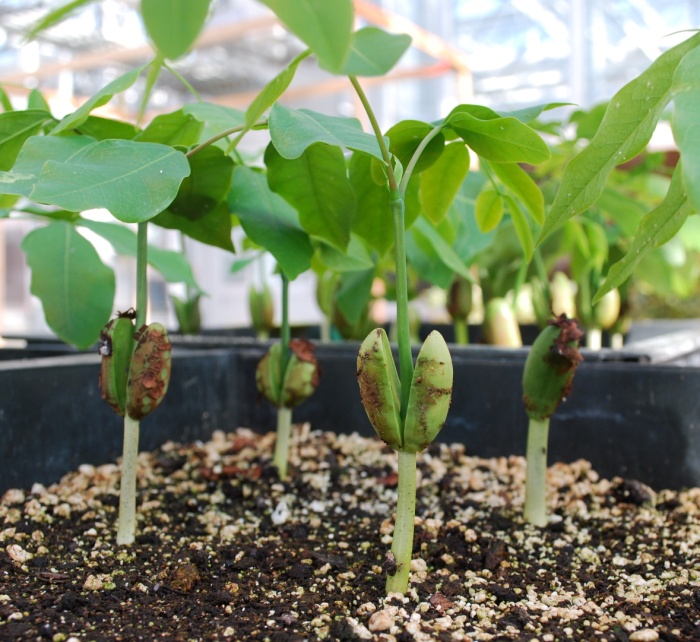
Afzelia quanzensis seedlings grow in the horticulture greenhouse at Purdue

Muyombi Kyungu, Trees for Tanzania Africa Manager, distributes tree
seedlings to schoolchildren in Kigoma, Tanzania.
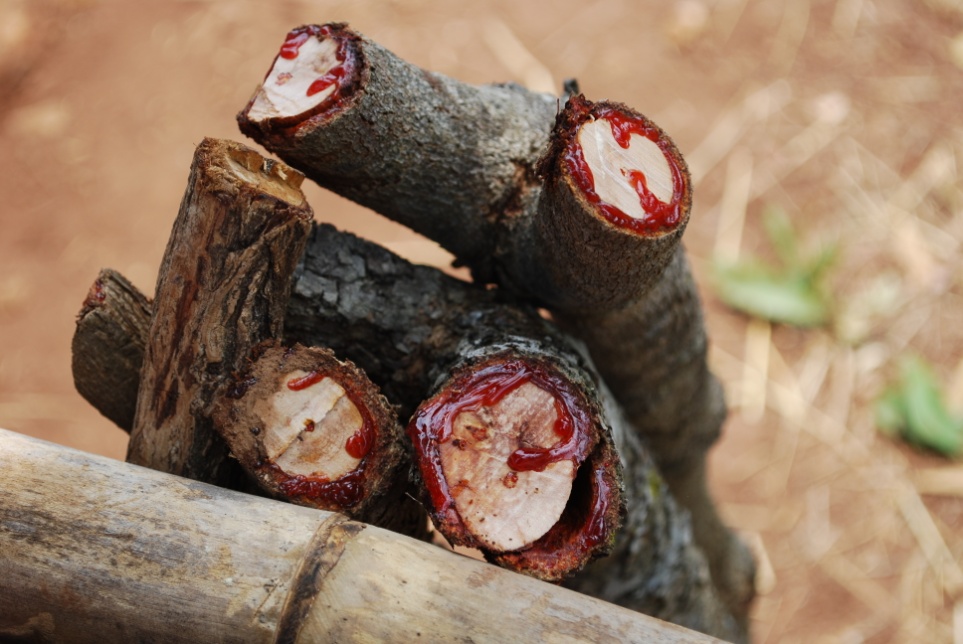
When injured, Pterocarpus angolensis, known as bloodwood tree
,
exudes a blood-like sap which is valued for its medicinal properties.
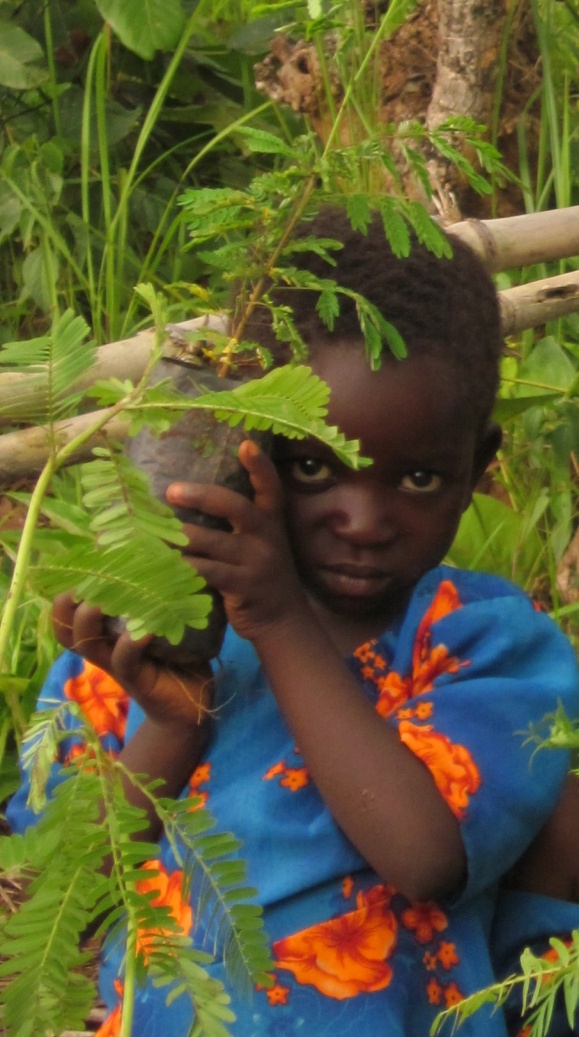
A young Tanzanian girl poses with one of her family’s seedlings.
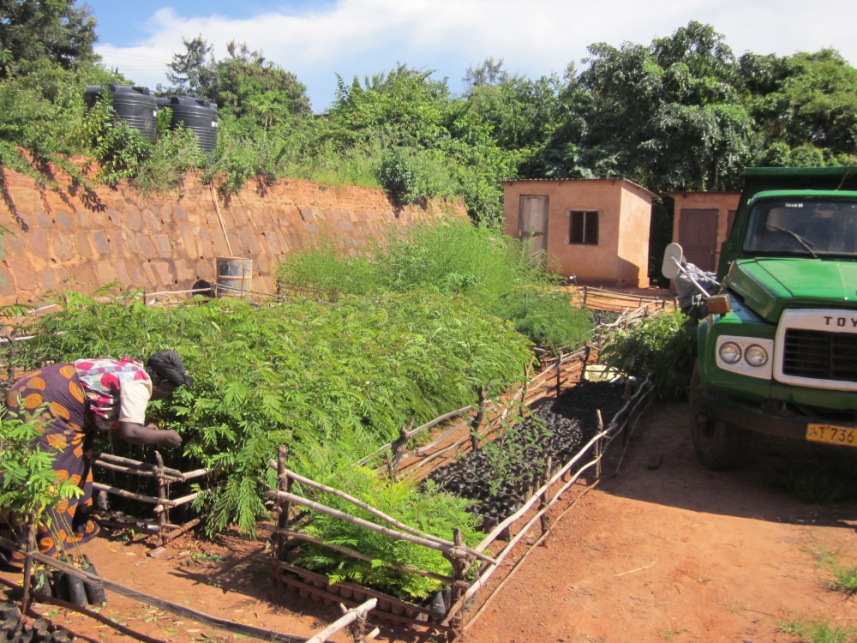
Tree seedlings ready to be loaded for delivery to several schools, churches and mosques.
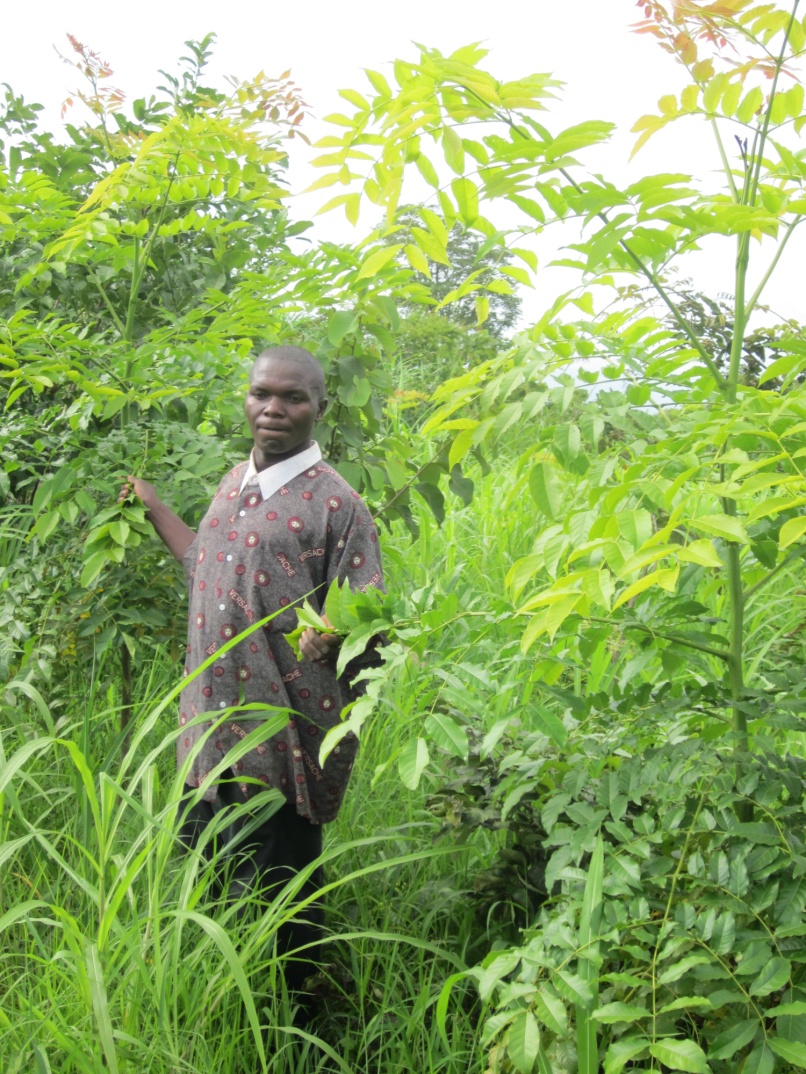
Baltizary, employee of Trees for Tanzania, stands amongst trees at the Trees for Tanzania test site.
Awards
HTIRC Scientist Douglass Jacobs Recognized for Award [More]
Dr. Douglass Jacobs has been selected as a 2011 University Faculty Scholar. The UFS award recognizes mid-career faculty who have distinguished themselves through exceptional achievements and are on an accelerated path to distinction. Follow the link for more on this story.
Upcoming Events
July 31-August 3, 2011
Walnut Council 7th Research Symposium, Middleton, WI
Information online at www.walnutcouncil.org
Past Events
On March 31, 2011 the Walnut Council, US Forest Service Northern Research Station, HTIRC, and US Forest Service Northeastern Area State & Private Forestry sponsored a workshop on the thousand cankers disease (TCD) of black walnut for state forestry agencies, state departments of agriculture personnel and industrial and consultant foresters. The full day workshop covered the latest science on TCD, practical diagnostic tools for recognizing TCD, and field detection and survey protocols.
The HTIRC will send a special email newsletter issue once the presentations and resources from the workshop are available for on-line viewing, so watch your in-box and check our website for updates – www.htirc.org
Have questions about tree planting? This series of publications can be viewed or downloaded free of charge. Planting and Care of Fine Hardwood Seedlings
Van Eck Scholarships available for graduate research with the HTIRC.
Ask the HTIRC: email Lenny Farlee with your tree planting and forest management questions and we’ll help you find the answers.
